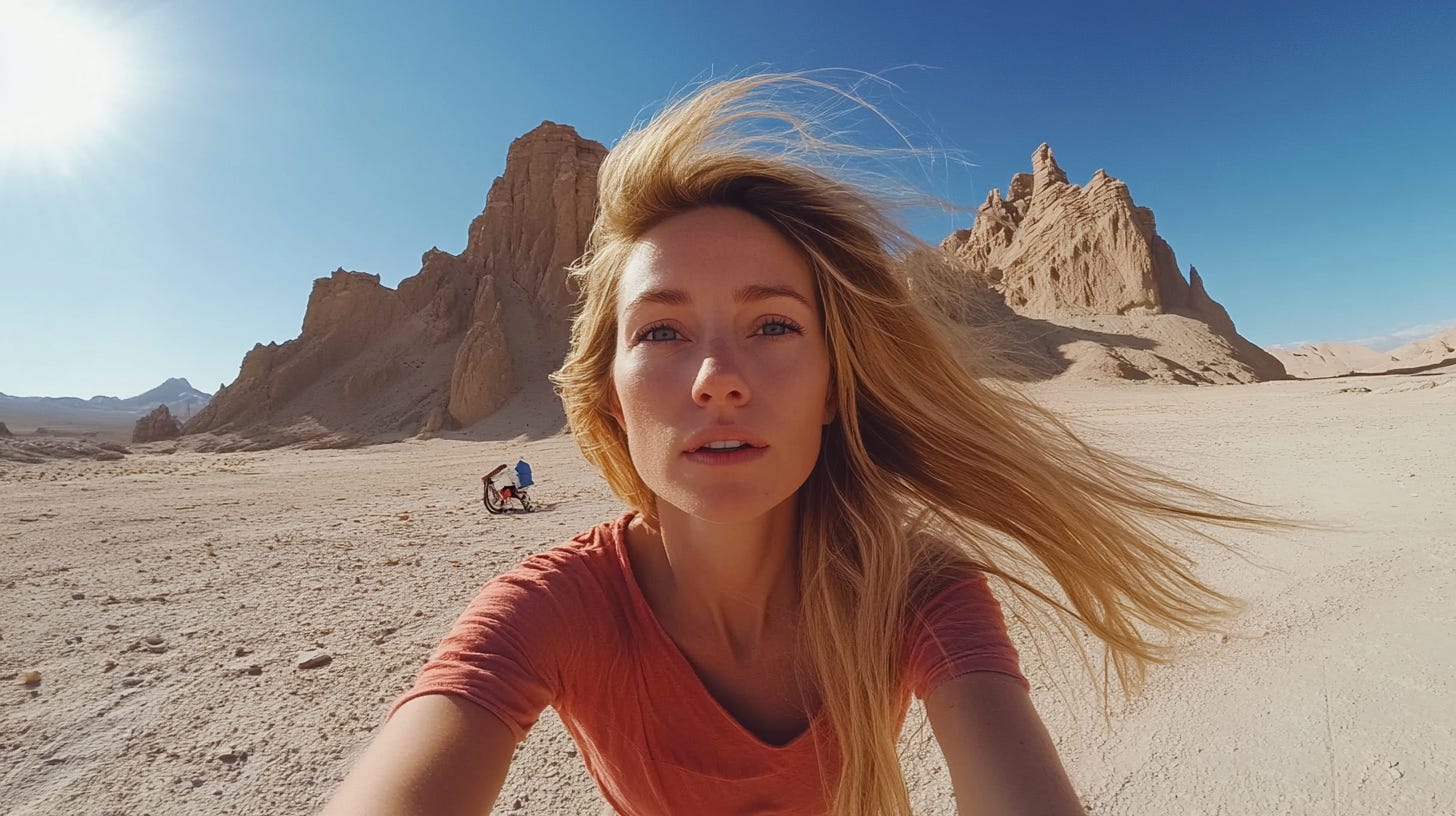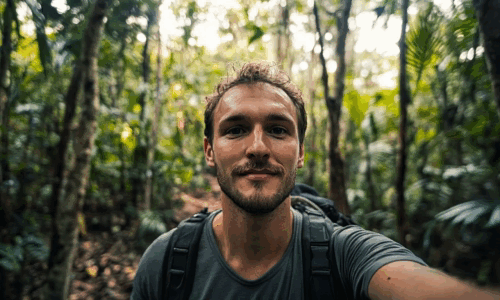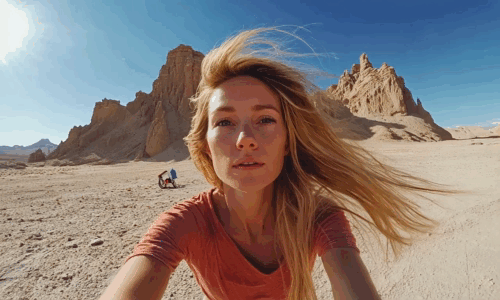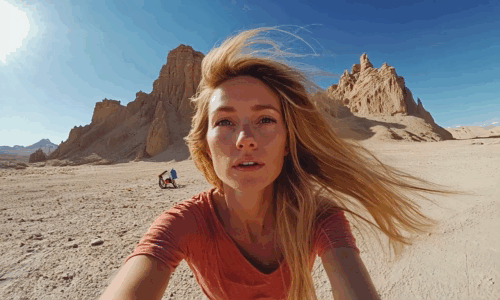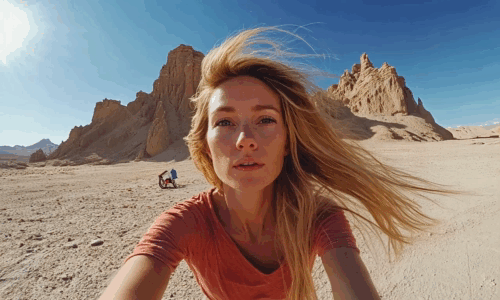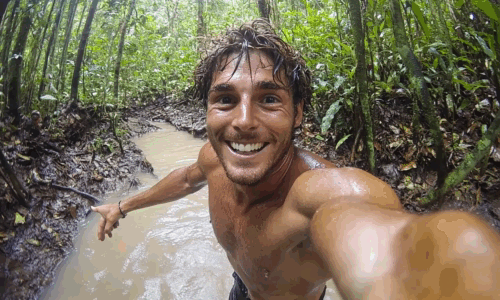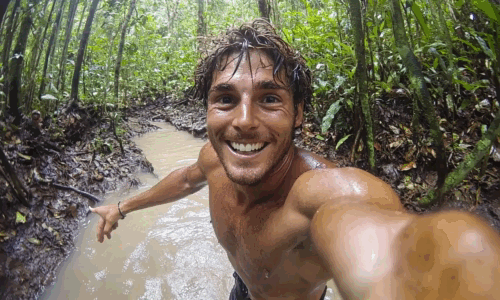Runway Prompts #5: Camera shots that follow or track the subject in motion
Immersive Runway prompts
"Runway Prompts" is a article series that shares image-to-video prompt keywords and phrases that are proven useful in Runway. You can use them as-is or as building blocks to create longer Runway prompts to animate Midjourney images.
The primary goal of this article series is to save you time and video generation credits while creating a video in Runway.
In this article series, each prompt will be re-run at least four times to determine whether it can consistently produce a desirable outcome.
The fun of exploring the world you created
There's something magical about bringing your imagination to life by animating your subjects to move around in the world you've created in Midjourney.
Whether it’s an ancient city or a mystical desert, you can explore virtual worlds by following your character as they walk through town, explore the desert, or run through a jungle.
In this article, I’ll share with you the following:
Camera shots that track the subject
Tracking shots
Snorricam
FPV shots
How to get the subject’s hands off the camera
The models
All images were generated using Midjourney.
The first two camera shots show the subjects from behind.
(a) A woman walking through a city.
(b) A man walking through the jungle.
The other three camera shots are the selfie or camcorder videos from the perspective of the subject.
(c) A man recording himself in the jungle.
(d) A woman recording herself in the desert.
(e) A man getting ready to take a dip into the muddy river the jungle.
(1) Camera shots that track the subject
Some of these popular camera shots are:
Tracking shot
Snorricam
Camcorder
FPV shot
Handheld
Over the shoulder
Tip: The beauty of these keywords is that you only need to use them exactly as shown above in your Runway prompt. There’s no need to mention the subject. Runway will automatically track your subject.
The results are similar.
They all perform as expected, with a high success rate (75-100%).
Examples:
Tracking shot
Camcorder
To make the subject move faster, you can use the keyword “hyperspeed” or the standard Runway template:
Continuous hyperspeed FPV footage: The camera moves seamlessly through the alley. —> high success rate.
You can also include more details, such as rain or snow.
Continuous hyperspeed FPV footage: The camera moves seamlessly through the alley. It starts to rain. —> high success rate. The raindrops are not clearly visible in the GIF file, but believe me, it rains!
Continuous hyperspeed FPV footage: The camera moves seamlessly through the alley. It starts to snow. —> high success rate.
(2) Tracking shots
We'll look into these shots because they are commonly used to follow subjects from behind.
Tracking shot: subject walks into the dense tropical jungle —> high success rate.
Tracking shot: subject walks into the dense tropical jungle. x30 speed, dynamic action —> the “x30 speed” does not increase the speed.
Tracking shot: subject runs into the dense tropical jungle. x30 speed, dynamic action —> the keyword "run" works, but the running is in slow motion.
Tracking shot: subject runs into the dense tropical jungle. Hyperspeed FPV footage, dynamic action —> finally, fast movement! However, the subject appears to be flying through the jungle rather than running!
(3) Snorricam
SnorriCam is a camera that is attached to the subject's body and allows us to see things from the subject's point of view.
Snorricam footage of a man being chased through a forest. The camera is fixed to his chest, showing his face and the trees rushing past behind him. —> 3/4 success rate. However, the leg movement appears odd, as if the subject is flying through. Sometimes, the subject may walk backward.
Snorricam footage: The subject walks through the forest as the trees pass behind. —> High success rate with slower movement
Snorricam footage: The subject walks through the forest as the trees pass behind. x30 speed —> 3/4 success rate with one of them walking too fast, another walking backwards, and the other walking normally.
Snorricam footage: The subject runs through the forest with fear as the trees pass behind. x30 speed. —> A tiger is chasing behind, but our subject is happy :-)
Snorricam footage: subject walks quickly through the forest as it begins to rain. —> it rains but doesn't wet the subject's face or the leaves.
(4) FPV shots
FPV stands for "first-person view," and, like Snorricam, it allows us to tell the story from the perspective of the subject.
FPV shot: subject exploring the desert happily —> high success rate.
Camcorder: subject exploring the desert happily —> high success rate. Result similar to FPV shot. The other shots: Snorricam, Handheld, and Over the shoulder have similar results with high success rates.
FPV shot: subject exploring the desert in a strong winds There is a sandstorm far away → high success rate.
FPV shot: subject exploring the desert while eating an ice cream —> high success rate, but the eating action is unrealistic.
(5) How to get the subject’s hands off the camera
For images that begin with the subject holding (selfie, camcorder) or attaching (Snorricam) to the camera, it can be difficult to get the subject to let go of the camera and continue the action. The subject will usually hold on to the camera until the end of the video clip.
FPV shot: Subject is excited and jumps into the river —> high success rate. Subject holds on the camera.
FPV shot: The subject is excited and jumps into the river, carrying the camera with him submerged under the water. —> the subject is in the water but the camera is not.
These prompts failed to make the subject let go of the camera and continue doing what he wanted to do, that is, plunge into the river.
FPV shot: Subject throws away the camera
Subject throws away the camera
Snorricam: Subject is excited and jumps into the river —> not successful in getting the subject to let go of the camera. So as the keywords: camcorder (only 1/4 jumps into the water) and handheld (2/4 jumps into the water).
And the secret to getting the subject to let go of the camera is...
Keep reading with a 7-day free trial
Subscribe to Geeky Curiosity to keep reading this post and get 7 days of free access to the full post archives.




